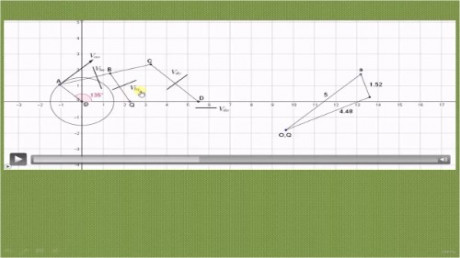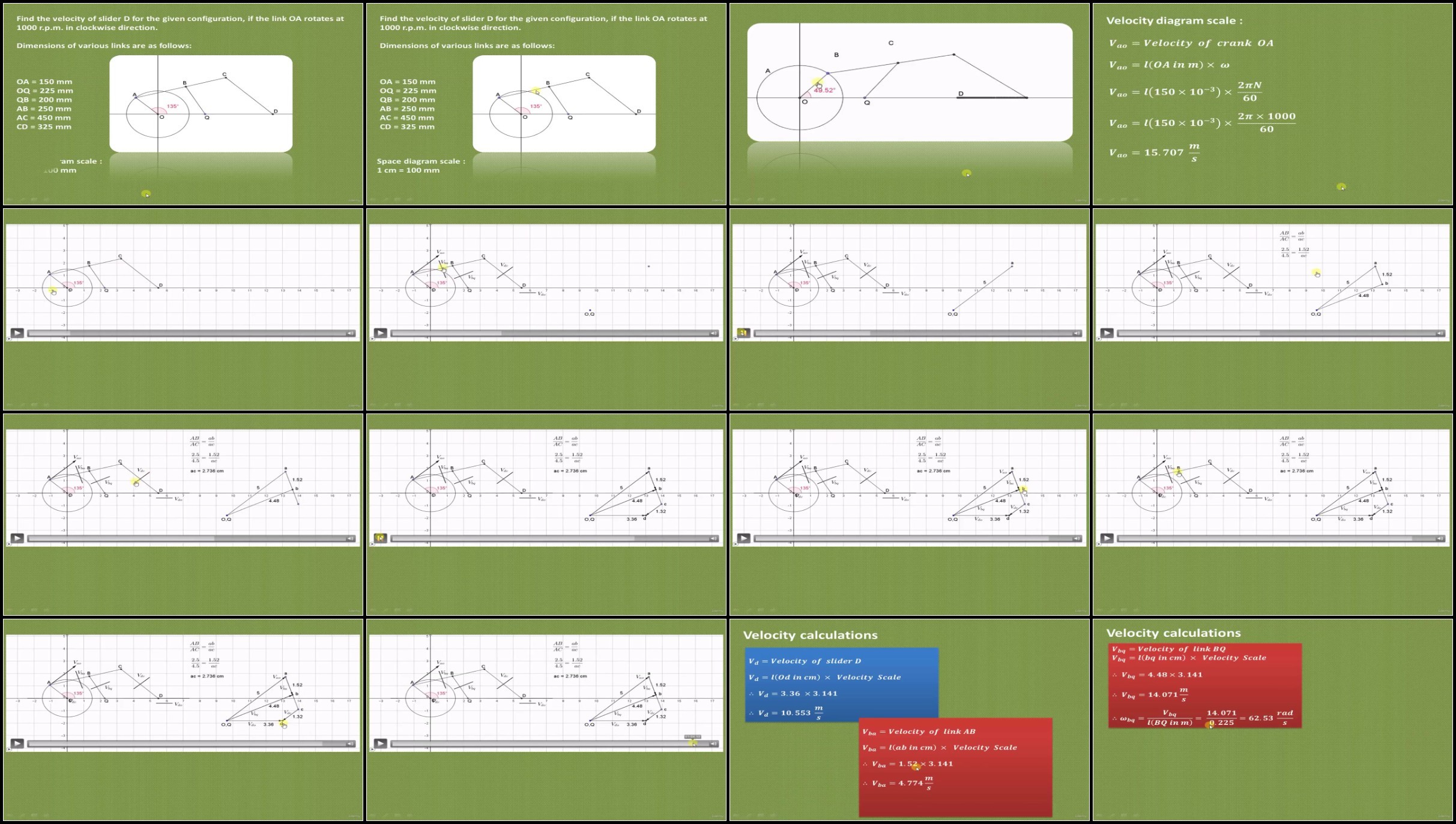Most Commented
Velocity & acceleration diagram - Theory of machines




Description material

Published 7/2024 MP4 | Video: h264, 1280x720 | Audio: AAC, 44.1 KHz, 2 Ch Language: English | Duration: 3h 55m | Size: 1.73 GB
With the help of animation , you will learn how to draw velocity & acceleration diagram for typical mechanisms.
What you'll learn
You will learn about Relative velocity method used to draw velocity & acceleration diagrams
You will learn the instantaneous centre method of velocity & acceleration
Klein's construction
Basics of Analytical method of velocity and acceleration
Requirements
Basics of types of links,mechanisms & inversions of mechanism.
Description
Drawing velocity and acceleration diagrams for mechanisms is essential for understanding their motion characteristics. Various methods such as the Relative Velocity Method, Klein's Construction, Instantaneous Centre Method, and Analytical Method can be employed.1. Relative Velocity Method: This graphical technique involves determining the velocity of various points in a mechanism relative to each other. Start by identifying known velocities and directions, then use vector addition to find unknown velocities. The velocity of a point can be determined by constructing a vector triangle, ensuring the directions and magnitudes match the physical constraints.2. Klein's Construction: Klein's method is particularly useful for four-bar linkages. Begin by drawing the configuration of the mechanism to scale. Then, use geometric properties of the linkage to construct auxiliary circles and lines, allowing for the graphical determination of velocities and accelerations. This method leverages the relative positions of points and links, simplifying the complex motion into manageable geometric constructs.3. Instantaneous Centre Method: This approach identifies the Instantaneous Centres of Rotation (ICRs) for different links in the mechanism. By locating these centres, the velocities of different points can be determined using the fact that any point on a link rotates about the ICR at that instant. The method involves drawing perpendicular bisectors to the velocity vectors of known points and finding their intersections.4. Analytical Method: This involves using mathematical equations derived from the kinematic analysis of the mechanism. By applying principles of relative motion and using the loop-closure equations for linkages, the velocities and accelerations can be computed analytically. This method provides precise numerical results and can be programmed for complex mechanisms.Each method has its unique advantages and applications, providing engineers with robust tools to analyze and design efficient mechanical systems.
Who this course is for
This course is for Mechanical Engineering Degree & Diploma students & professionals.

Download
RapidGator
FileStore
NitroFlare
RapidGator
FileStore
NitroFlare
Join to our telegram Group
Information
Users of Guests are not allowed to comment this publication.
Users of Guests are not allowed to comment this publication.
Choose Site Language
Recommended news
Commented


![eM Client Pro 9.2.1735 Multilingual [Updated]](https://pikky.net/medium/wXgc.png)






![Movavi Video Editor 24.0.2.0 Multilingual [ Updated]](https://pikky.net/medium/qhrc.png)

